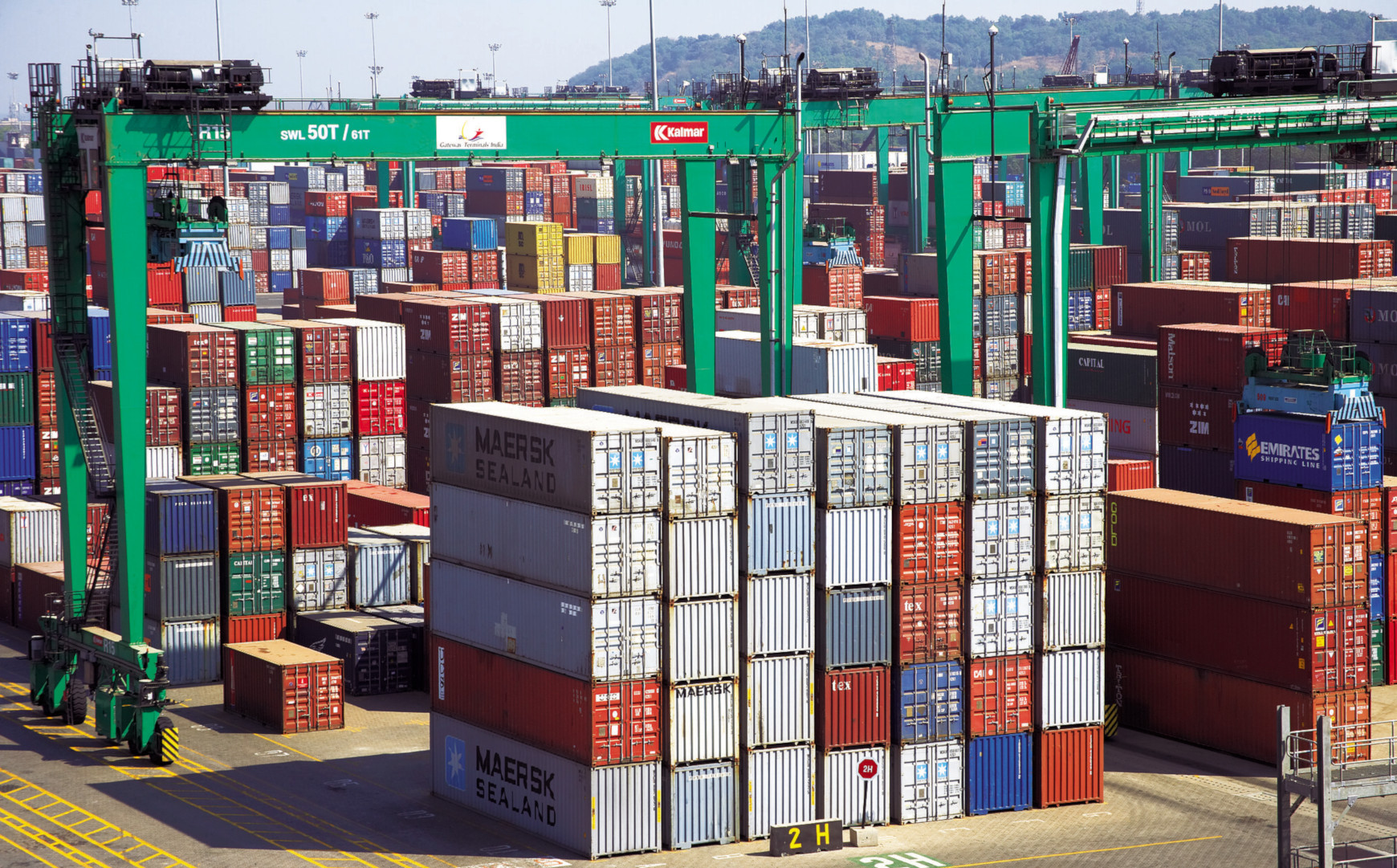With the exception of trades to the United States, container carriers operating out of India have mostly seen steady freight rate trends this month, the latest market analysis by Container News shows.
On the westbound India-Europe trade, average short-term contract rates from West India [Jawaharlal Nehru Port (JNPT)/Nhava Sheva or Mundra Port] to Felixstowe/London Gateway (UK) or Rotterdam (the Netherlands) have remained unchanged at US$650 per 20-foot container and US$700 per 40-foot container.
However, for West India-Genoa (the West Mediterranean) cargo, contract rates for a 20-foot box have moved up to US$725, from US$700 at the end of May, while for an FEU, rates have dropped to US$700, from US$800/FEU a month ago.
Eastbound cargo (imports into India) rates for these port pairings have also seen no changes, with the exception of West Mediterranean-West India trade, month-on-month. According to the analysis, average rates stand at US$950/20-foot container and US$1,050/40-foot container for bookings from Felixstowe/Rotterdam to West India, whereas rates for shipments from the West Mediterranean (Genoa) to Nhava Sheva/Mundra have fallen to US$715/20-foot box and US$850/40-foot box, from US$850 and US$950, respectively, in May.
Despite the two rounds of general rate increase (GRI) attempts by major carriers, prices have further cooled on the India-US trades. The analysis has found that contract rates for cargo moving from West India (Nhava Sheva/Mundra) to the US East Coast (New York) have slid to US$1,400 per 20-foot box, from US$1,700, and US$1,650 per 40-foot box, from US$2,100, and to US$1,400/20-foot container, from US$1,600, and US$1,700/40-foot box, from US$1,800, month-on-month, for Indian container loads moving to the US West Coast (Los Angeles).
For the West India-US Gulf Coast (Houston) trades, average rates have declined to US$1,800 per 20-foot and US$2,600 per 40-foot container, from US$1,900 and US$2,850, respectively, at the end of May, according to the analysis.
Major carriers, such as Mediterranean Shipping Co. (MSC), CMA CGM, Hapag-Lloyd, Maersk and HMM, have filed notices with the Federal Maritime Commission (FMC) for mandatory approval to implement further GRIs for India-US cargo, mostly from 1 July.
Short-term contract rates on the US-India trades (return leg) have also seen further declines, by about 10% from USEC and 30% from USW, on average, from the levels maintained by major operators last month. However, rates from the Gulf Coast to India have held firm, month on month.
According to the CN analysis, rates are down to US$637/20-foot box, from US$712, and US$750/40-foot box, from US$850, for shipments from USEC (New York); and to US$1,484/20-foot box, versus US$1,988, and US$1,519/40-foot box, from US$2,376, for bookings from USWC (Los Angeles). Rates from the Gulf Coast to West India stand at US$1,500/20-foot and US$2,050/40-foot box.
Rates on intra-Asia trades out of India have also seen no major changes month on month, with the exception of South China bookings, the CN analysis reveals. For West India-Yantian (South China), average rates have fallen further from the May levels, now at US$170/20-foot box, versus US$225, and US$230/40-foot container, versus US$275, while for West India-Central China (Shanghai) and North China (Tianjin) trades, rates have stayed unchanged at US$15/20-foot box and US$30/40-foot, and
US$50 and US$100, respectively.
Similarly, for Indian cargo to Singapore, there has been no month-on-month change – at US$10/20-foot and US$20/40-foot container.
For Indian shipments to Hong Kong, major carriers continue to accept bookings at US$15/20-foot container and US$30/40-foot container, according to the CN analysis.
Average June prices for West India-Jebel Ali/Dubai shipments have slightly moved up — to US$75/20-foot container and US$150/40-foot box, from US$70 and US$140, respectively, at the end of May.
Meanwhile, Indian merchandise exports, by value, declined for the fourth consecutive month in May, down 10.3% year-over-year to about $35 billion, according to new data released by the Indian Ministry of Commerce & Industry.
“The sharp decline in the international demand situation has led to the fall in overall exports,” A Sakthivel, president of the Federation of Indian Export Organisations (FIEO), said in a statement.
Sakthivel further noted, “Major economies, including US and China, are showing downward trend in exports, along with the Eurozone entering into technical recession after the region shrank by 0.1% in Q1 2023, marking two consecutive quarters of contracting GDP.
He also said, “The slowdown comes in wake of higher energy prices, contributing to curbing demand in Europe’s largest economy and surging inflation.
Sakthivel went on to explain, “One of the reasons for moderating pace of growth in merchandise exports significantly in 2023 has been because of persistent geopolitical tensions, monetary tightening and recessionary fears which has continuously led to a fall in consumer spendings across the globe especially in advanced economies.”
However, FIEO believes Indian exports will rally from July, “with fresh orders or order bookings for the upcoming festival/New Year season beginning to kick in.”
Jenny Daniel
Global Correspondent
Contact email: j.daniel@container-news.com







